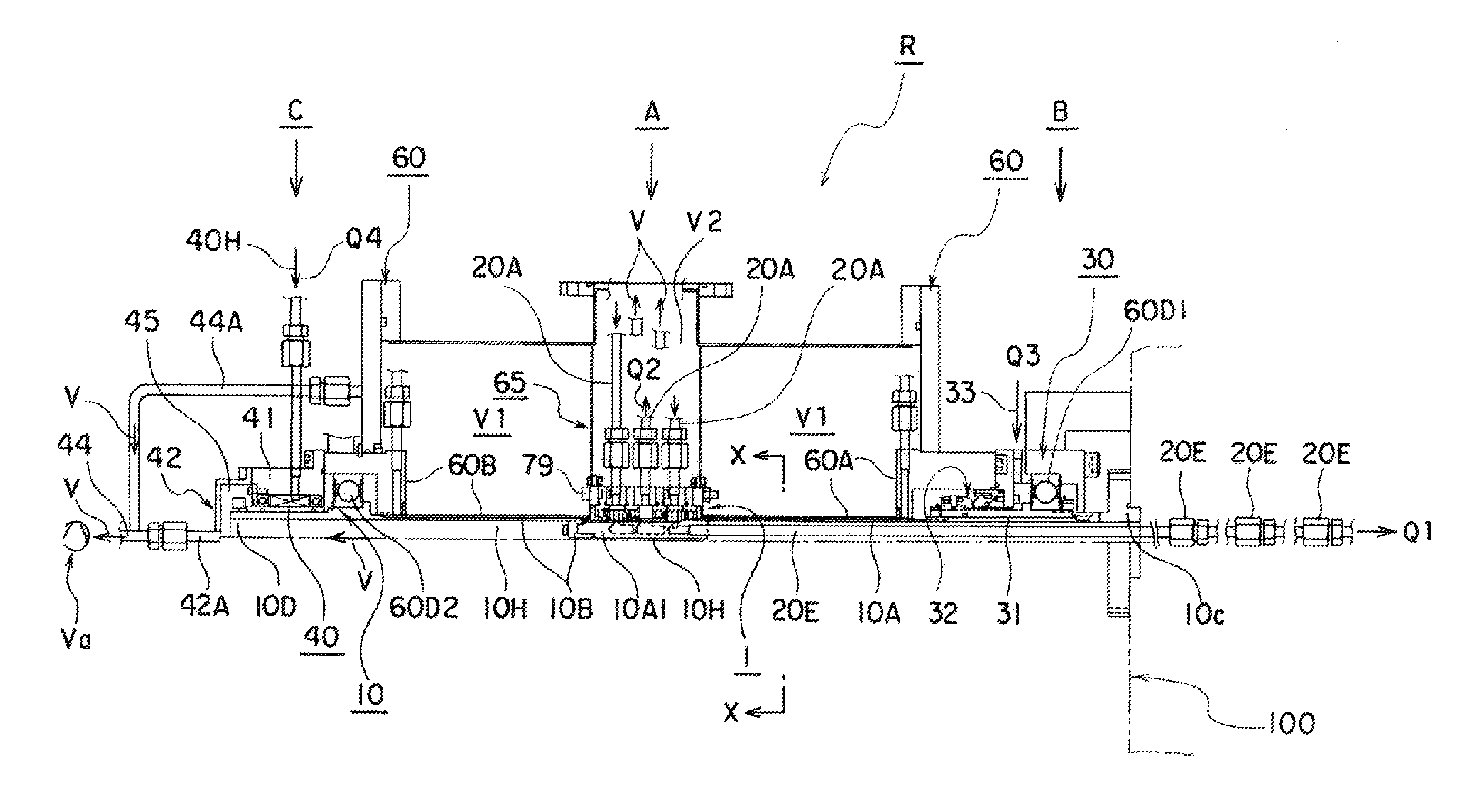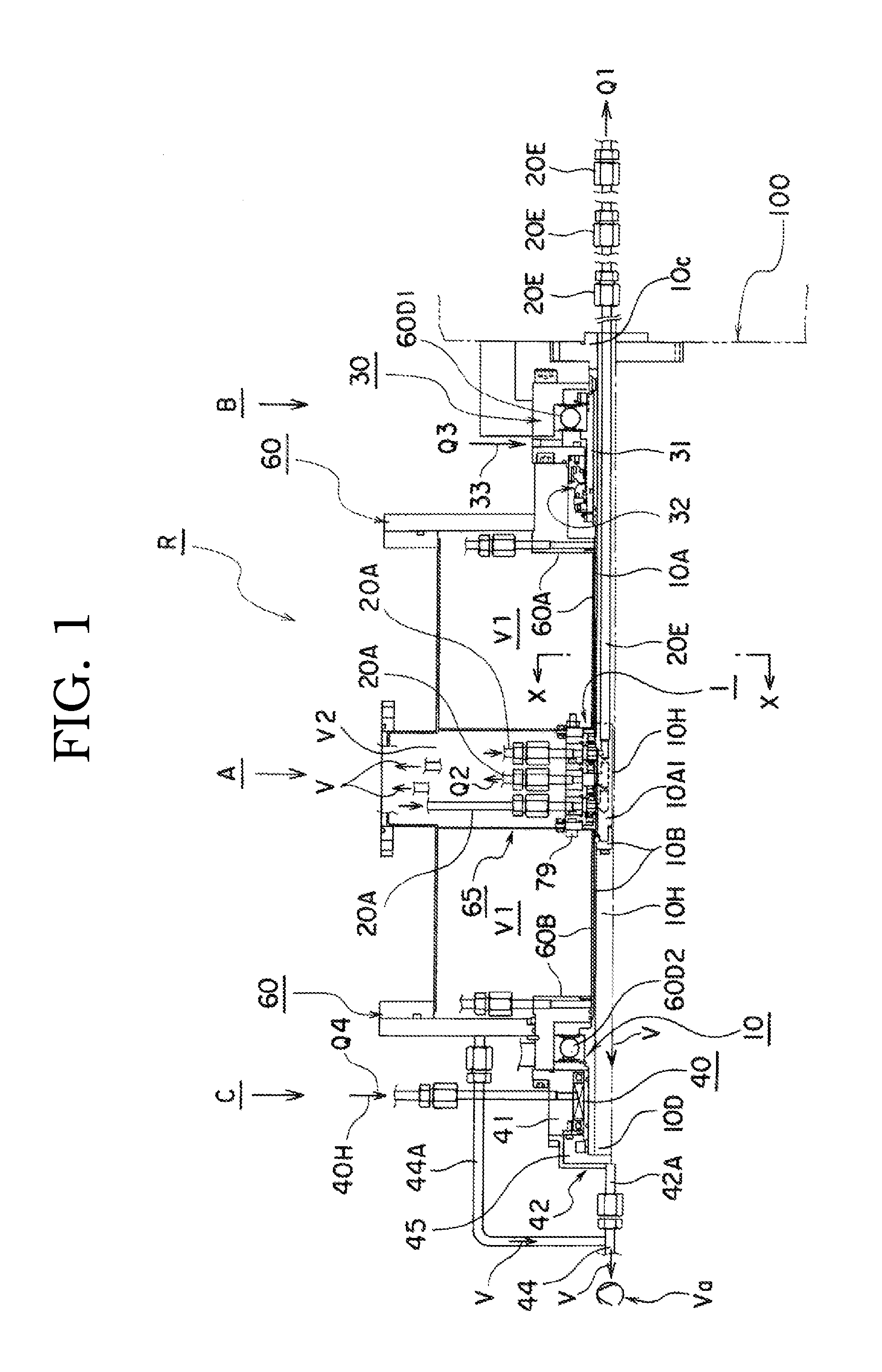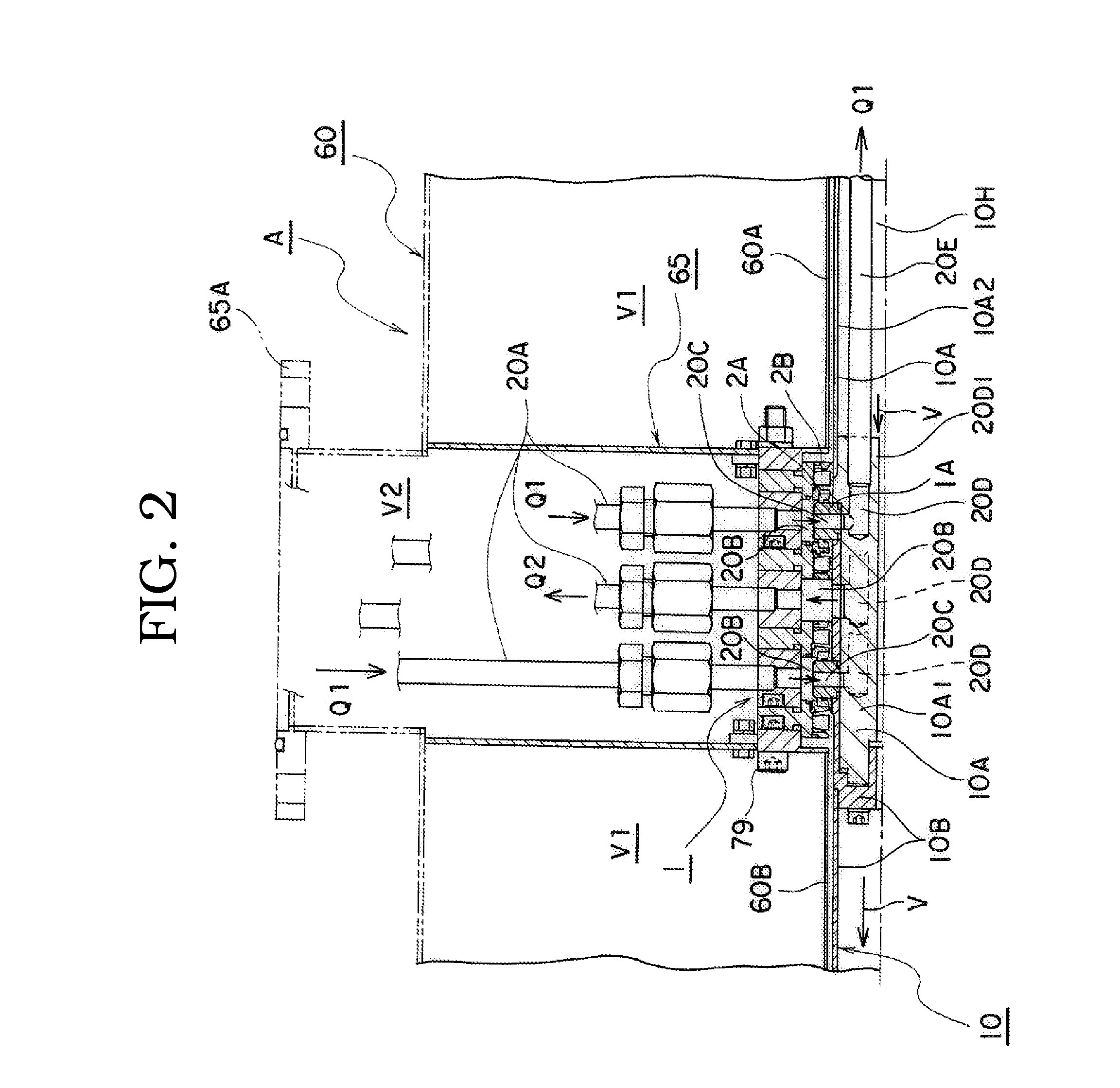Rotary joint
a technology of rotary joints and connecting parts, which is applied in the direction of adjustable joints, branching pipes, mechanical equipment, etc., can solve the problems of increasing the amount of supplying refrigerant to the cooling portion, difficult to maintain the supplying refrigerant at cryogenic temperature, and inability to achieve superconducting functions, etc., to achieve the effect of reducing the production cost and assembling cost of the second mechanical seal device and connecting components, reducing the length in an axial
- Summary
- Abstract
- Description
- Claims
- Application Information
AI Technical Summary
Benefits of technology
Problems solved by technology
Method used
Image
Examples
embodiment 1
[0033]Note that, each drawing explained blow are accurate drawings produced based on a design drawing. FIG. 1 is a cross sectional view of one side of a rotary joint “R” of the present invention. Note that, in FIG. 1, hatchings are omitted, because the drawing will be unclear, if the hatching is illustrated in the cross sectional view. Also, FIG. 2 shows the vicinity of a mechanical seal device 1 and pipes of FIG. 1, and is an enlarged cross sectional view of one side of a first assembled body “A”. Further, FIG. 3 is a further enlarged cross sectional view showing a constitution of the vicinity of a second mechanical seal device 1 of FIG. 2. FIG. 4 is an enlarged cross sectional view of one side of a second assembled body “B” on a first bearing portion 60D1 side. FIG. 5 is an enlarged cross sectional view of one side of a third assembled body “C” on a magnetic fluid seal 40 side. FIG. 6 is an enlarged cross sectional view of the magnetic fluid seal 40 shown in FIG. 5.
[0034]Below, th...
second embodiment
[0058]FIG. 7 shows a second embodiment and is a front view of the connecting portion 10A1 corresponding to a view in the X-X arrows direction in FIG. 1. This connecting portion 10A1 is formed in a cylindrical shape shorter than the connecting portion 10A1 shown in FIG. 2, and a vacuum passage 10H in a circular shape is formed in an inner circumferential face thereof. Then, in FIG. 7, as similar with the connecting fluid passage 20D shown in the connecting portion 10A1 of FIG. 2, it is formed at 4 or more positions in a radial direction of the connecting portion 10A1 (4 positions in FIG. 4). Respective first pipes 20E is hermetically fitted to connecting bores 20D1 of three of these connecting fluid passages 20D, 20D, 20D. Then, the supplying refrigerant “Q1” is flowed in the first pipes 20E. Further, a second pipe 20E for the discharging refrigerant “Q2” is hermetically fitted to the left 1 position or 2 positions connecting bore 20D1 (for numeral reference, refer to FIG. 2). These ...
embodiment 3
[0060]FIG. 8 is a front view of the rotary seal ring 1A in the axial direction, which is fitted to the vacuum use cylindrical shaft 10. This rotary seal ring 1A is an embodiment 3. The rotary seal ring 1A shown in FIG. 8 is an example wherein the second fluid passages 20C penetrating to the inside thereof are provided at four positions along a circumferential face threreof. An inner circumferential face 1A3 of the rotary seal ring 1A is fitted to the outer circumferential face of the connecting portion 10A1 to communicate the four positions of the second fluid passages 20C with the four positions of connecting fluid passages 20D respectively. Then, the supplying refrigerant “Q1” supplied from the one position of first fluid passage 20A is flowed into the four positions of second fluid passages 20C. Also, respective seal faces 1A1, 1A1 are formed on both end faces of the rotary seal ring 1A. Further, seal mounting grooves 1A4, to which a seal ring 83B shown in FIG. 3 can be mounted, ...
PUM
 Login to View More
Login to View More Abstract
Description
Claims
Application Information
 Login to View More
Login to View More - R&D
- Intellectual Property
- Life Sciences
- Materials
- Tech Scout
- Unparalleled Data Quality
- Higher Quality Content
- 60% Fewer Hallucinations
Browse by: Latest US Patents, China's latest patents, Technical Efficacy Thesaurus, Application Domain, Technology Topic, Popular Technical Reports.
© 2025 PatSnap. All rights reserved.Legal|Privacy policy|Modern Slavery Act Transparency Statement|Sitemap|About US| Contact US: help@patsnap.com



